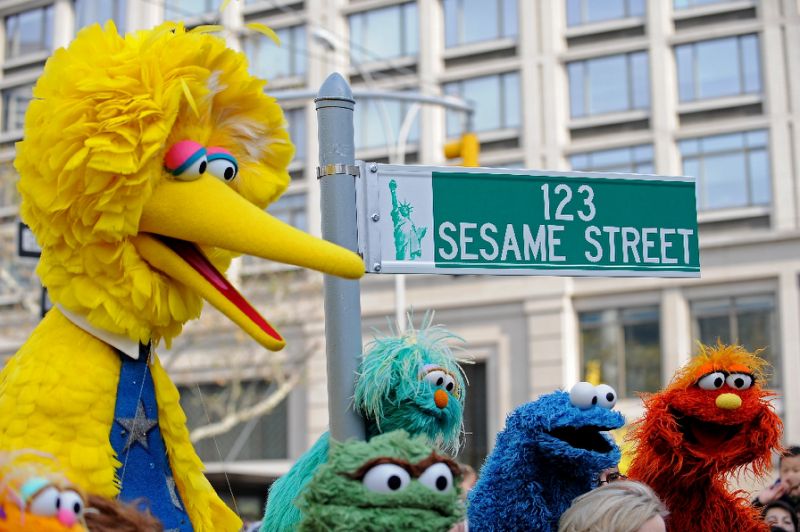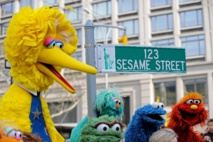Diagnoses of autism have risen steadily in recent years to the rate of one in every 68 US children, according to the Centers for Disease Control and Prevention. But tackling the topic for children was far from straightforward.
"The big discussion right at the start was, 'How do we do this? How do we talk about autism?'" Sesame Street writer Christine Ferraro told "60 Minutes."
"It's tricky because autism is not one thing, because it is different for every single person who has autism."
The episode introducing Julia includes some common scenarios.
When Big Bird is introduced to her, she ignores him. And when a group of children decide to play tag together, Julia becomes so excited she starts jumping up and down.
"That's a thing that can be typical of some kids with autism," Ferarro said.
But the situation turns into a new game in which all the children jump around with Julia.
"So it was a very easy way to show that with a very slight accommodation, they can meet her where she is," Ferraro said.
As for other characters, the show conducted extensive research, including consultations with educators and child psychologists, and in this case autism organizations, to understand how best to normalize autism for non-autistic children.
Julia's puppeteer, Stacey Gordon, also happens to be the mother of an autistic son.
"It's important for kids without autism to see what autism can look like," she told "60 Minutes."
"Had my son's friends been exposed to his behaviors through something that they had seen on TV before they experienced them in the classroom, they might not have been frightened."
Although it's not clear whether Julia will become a major character, "I would love her to be," Ferarro said.
"I would love her to be not Julia, the kid on Sesame Street who has autism," she added. "I would like her to be just Julia."
------------------------------------------------------------------------------------------------
"The big discussion right at the start was, 'How do we do this? How do we talk about autism?'" Sesame Street writer Christine Ferraro told "60 Minutes."
"It's tricky because autism is not one thing, because it is different for every single person who has autism."
The episode introducing Julia includes some common scenarios.
When Big Bird is introduced to her, she ignores him. And when a group of children decide to play tag together, Julia becomes so excited she starts jumping up and down.
"That's a thing that can be typical of some kids with autism," Ferarro said.
But the situation turns into a new game in which all the children jump around with Julia.
"So it was a very easy way to show that with a very slight accommodation, they can meet her where she is," Ferraro said.
As for other characters, the show conducted extensive research, including consultations with educators and child psychologists, and in this case autism organizations, to understand how best to normalize autism for non-autistic children.
Julia's puppeteer, Stacey Gordon, also happens to be the mother of an autistic son.
"It's important for kids without autism to see what autism can look like," she told "60 Minutes."
"Had my son's friends been exposed to his behaviors through something that they had seen on TV before they experienced them in the classroom, they might not have been frightened."
Although it's not clear whether Julia will become a major character, "I would love her to be," Ferarro said.
"I would love her to be not Julia, the kid on Sesame Street who has autism," she added. "I would like her to be just Julia."
------------------------------------------------------------------------------------------------









 Home
Home Politics
Politics











